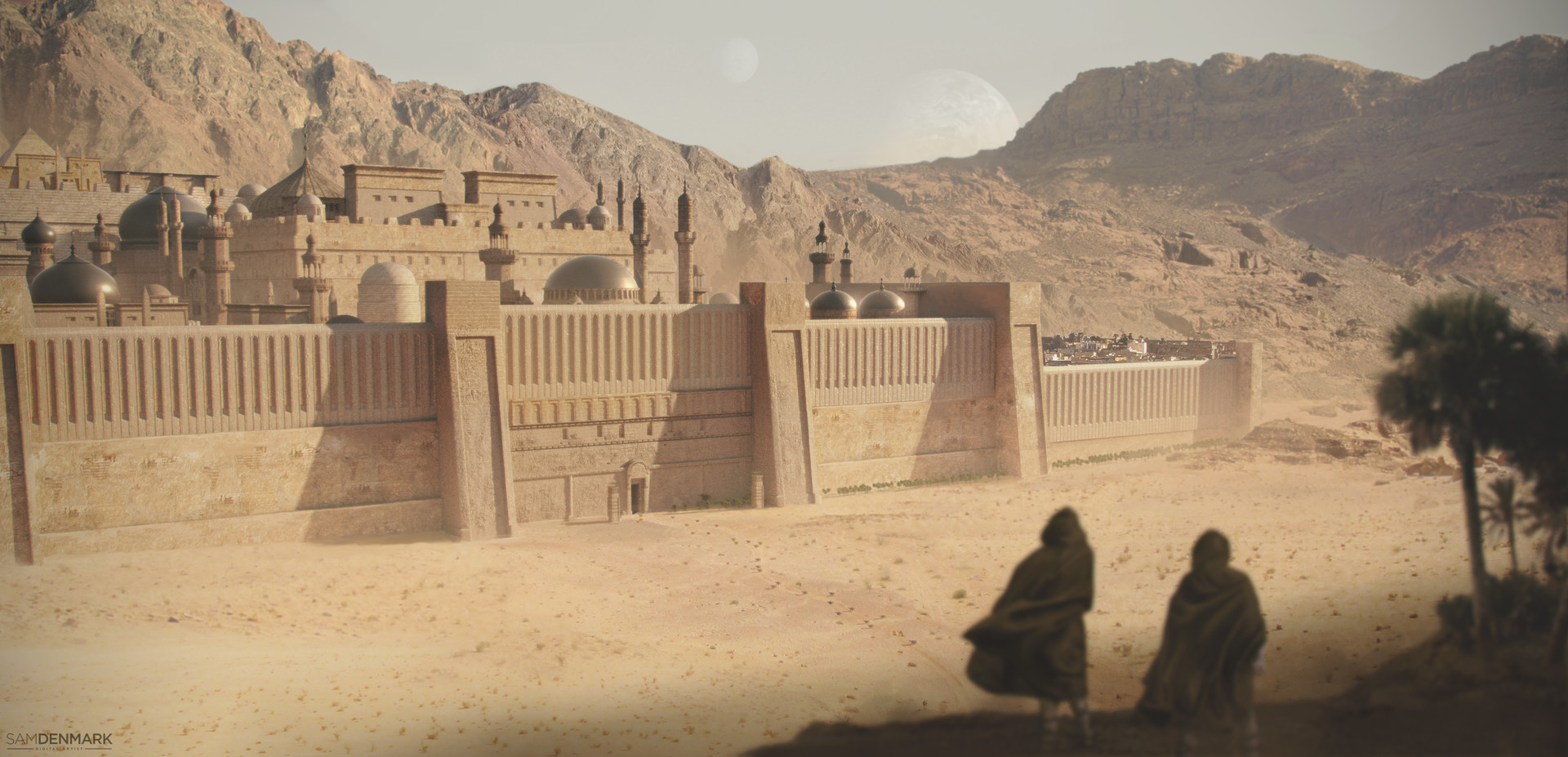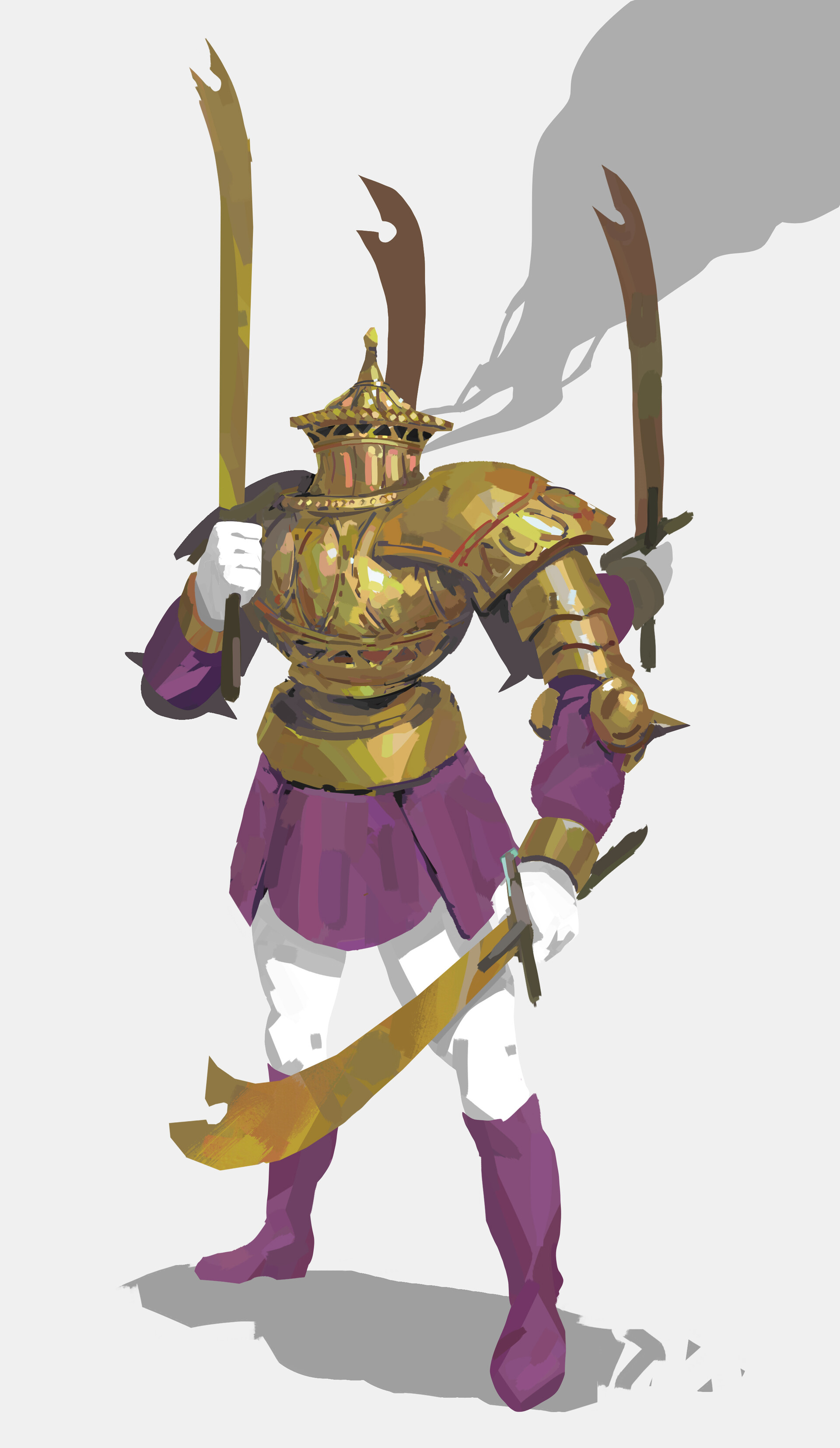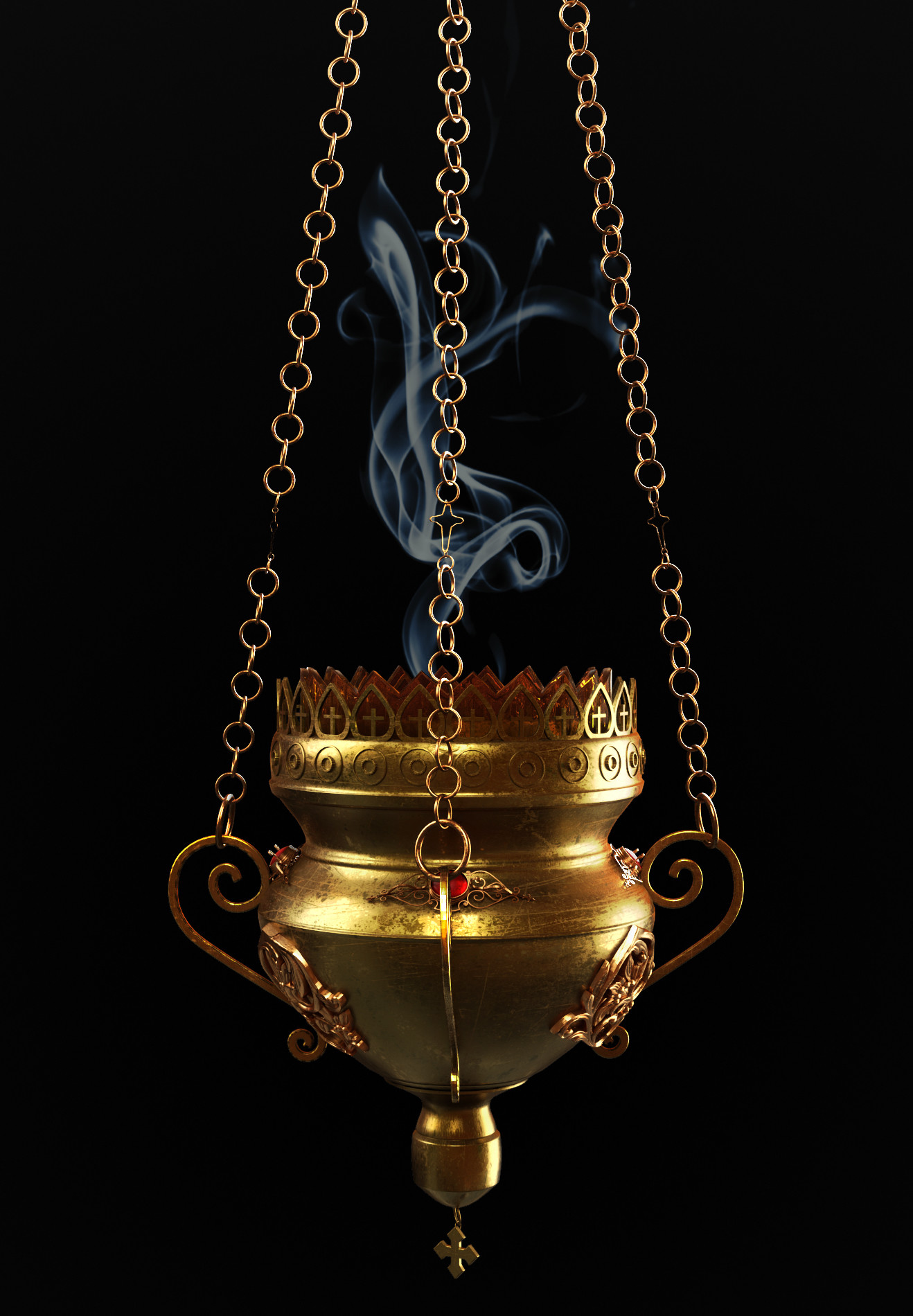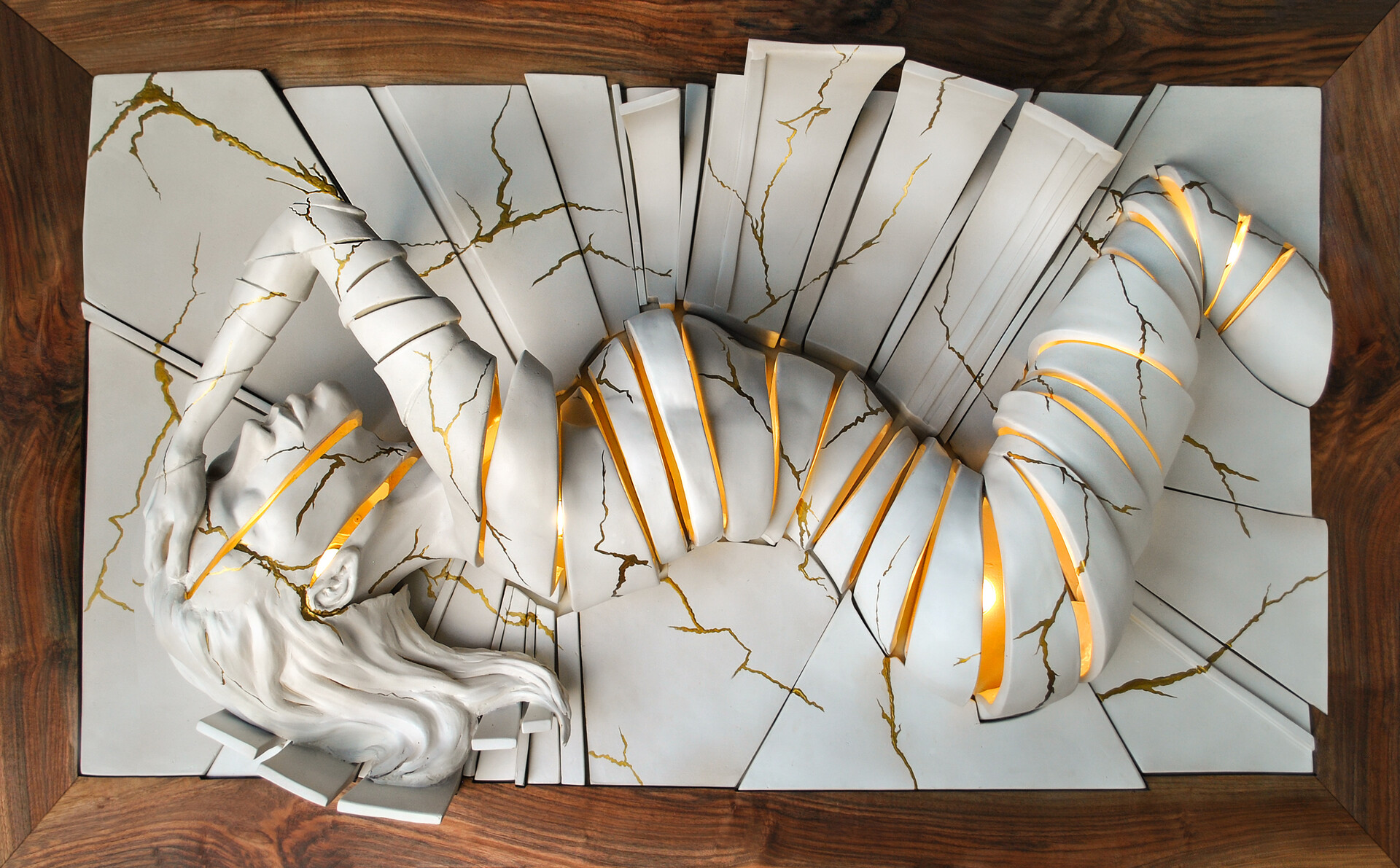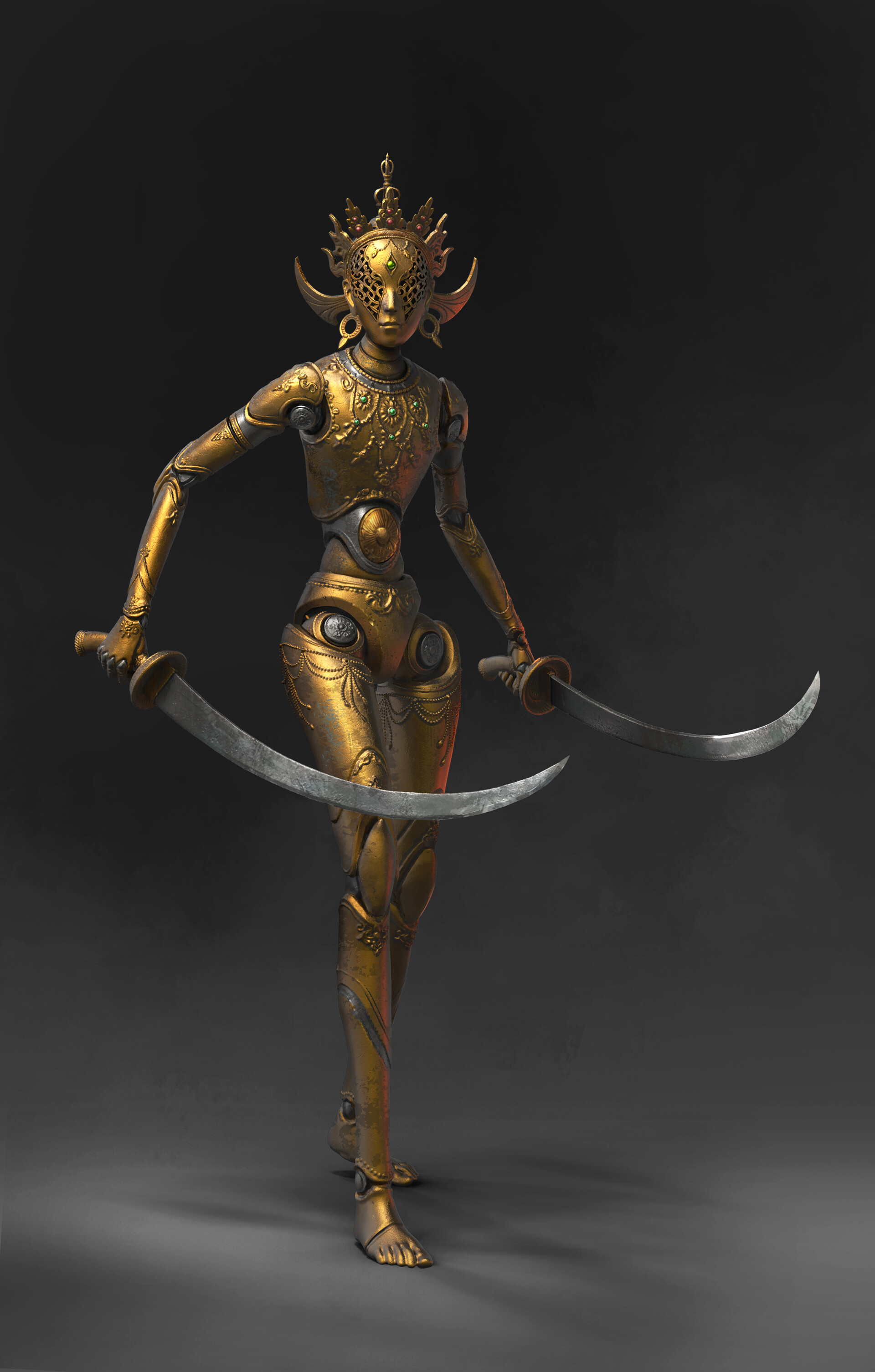These races are all fantastical humans, and would consider many of the classic fantasy races equally human. None of them are inherently better or worse at any given thing, though cultures may reinforce certain skills or passions and shun others. If in doubt, anyone can simply be a Cikrem nomad of whatever skin color they prefer, or simply add their preferred races as needed.
Each or all of them can interbreed, with children potentially inheriting the traits of more than one parent, however mixed race characters may face unique challenges. Unusual or unique traits may also manifest in members of any race, such as pointed ears, tusked canines, or webbed digits.
Yingao
Terse, hardy people who spare few words and have ruled Tajira for too long. They wish not to show their triple tongues, which change color based on their mood.
They wear clothing dull in color and trimmed of embellishment, and similarly prefer unseasoned foods, especially raw fruits and vegetation. Perhaps this stems from their homeland, a forest so dense and overgrown that the sun almost never reaches the ground.
 |
| The Mistress by Sam Carr (lightly edited) |
Gollo
Natives to the land now held by Tajira, most would gladly see the empire fall. Illusion magic is their native art, and they can be recognized by the hole that naturally runs through each torso and limb.
They keep some records with a system of knots and dyed strings, sometimes incorporating these along the hem of a cloak or tunic, in a way that communicates surreptitiously with their people.
Bolshu
Mournful people displaced from their homeland by the yingao empire. They bear twin sideways mouths and thumbs in the place of their littlefingers.
Their fashions tend toward many overlapping layers fastened with unique buttons, ranging in length from short sleeved tunics to long, enveloping robes. Outsiders often have difficulty with the strange bolshu buttons.
Cikrem
Wayward chromatic tribes who carry distinctive Dream Bread and wear tight clothing. Stories say a child born of two tribes will lead them to a new homeland, though they care little where they originated.
Their colorful bread is well known for causing wild visions that some find spiritual guidance in, and a few simply enjoy. Most cikrem keep a large, loose hood or sash.
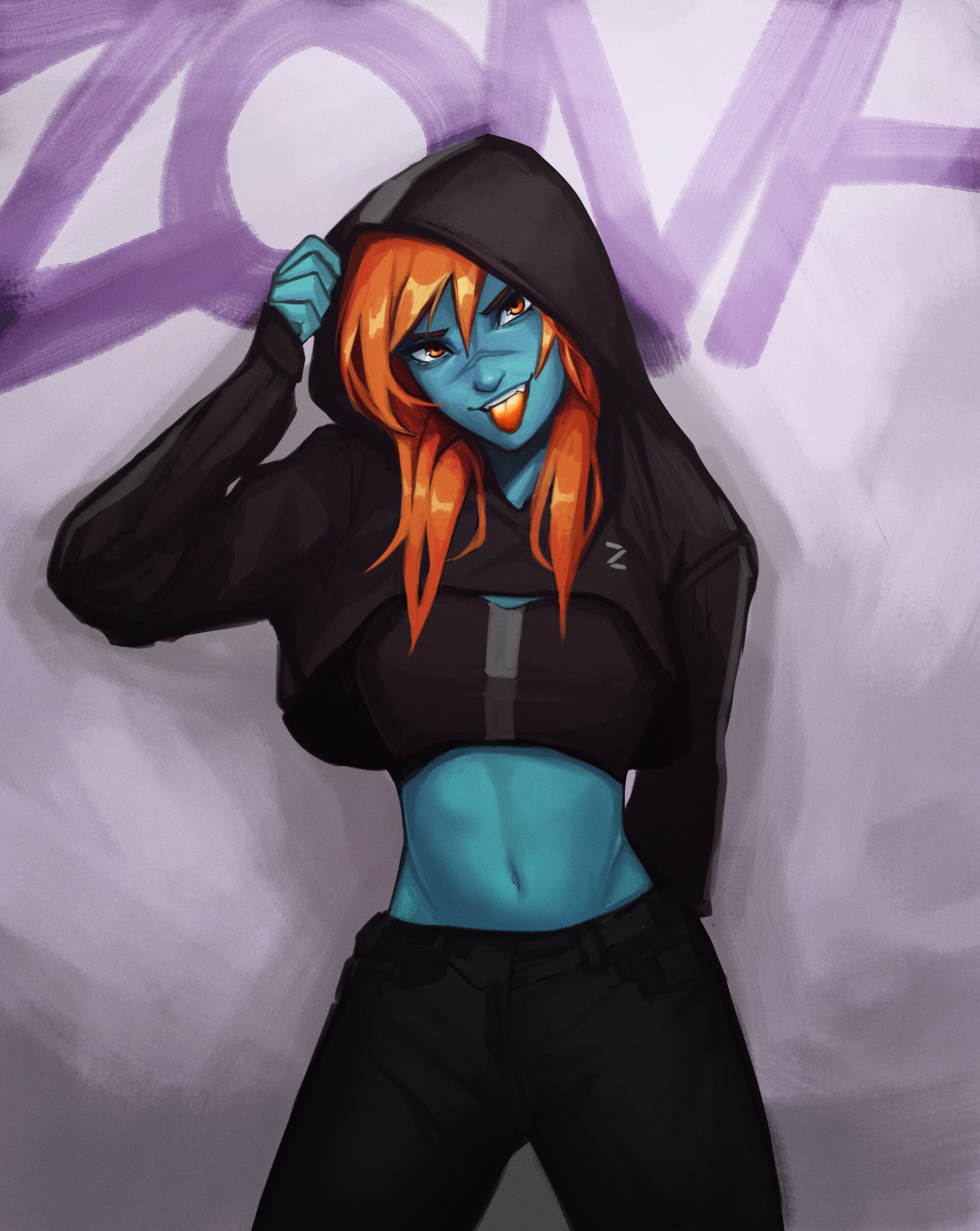 |
| ZONA 2019 by Q Tori |
Kippil
Allies to Tajira who hail from the mountains. Thought of as sneaky for their overly flexible limbs, each with an extra joint. They hunt great beasts in the mountains, prizing the meat and leather, and they have complex customs around leather clothing.
A single, continuous piece of leather formed into an outfit is called ‘full leather,’ with an outfit consisting of multiple sources called ‘cut leather,’ and ‘scrap leather’ as the lowest form, where the outfit is supplemented by other material.
Ortain
A larger empire lurking near the borders of Tajira, wishing for the first signs of weakness. Ashen skinned with needled teeth and faces some would call fish-like, they wield flame spewing weapons.
The frigid forests they come from are harsh and strange, and they have a strange preference for frozen meals. Exposing the arms is a sign of strength, and some may recognize the ortish cut of a flared, fur-lined vest.
Tula
Soft-spoken folk from a land of valleys and caverns. Oft assumed stubborn due to their horned heads, and usually hired as guards or mercenaries. Because of this, it’s easy to find helmets that account for and even protect the horns.
Individuals tend to be either very tall or very short, with average height strangely rare. They prefer simple clothing, but usually bear intricate carvings on their horns.
| Original Character - Sheep Girl by Lorena Carricondo |
Fahd
Seen by some as savages, for their lack of clothing and hair-covered bodies. They actually possess a rich culture of hair stylings.
Warriors will often braid their hair into tight, close-fitting rows, with shorn patterns to show their role as a life-taker. Meanwhile hunters of beasts are more likely to cut their hair shorter, and it is common for leaders or public figures to grow their hair long and straighten it.
Veshkin
Well-trusted traders from the Kajhar desert. They are considered beautiful for their crystalline hair and nails.
They tend to wear layers of light, airy fabric with subtle patterns, but those in Tajira tend to find the climate too cold and will adopt local fashions quickly. Veshkin cooks are known for crafting many fine sweets and candies.
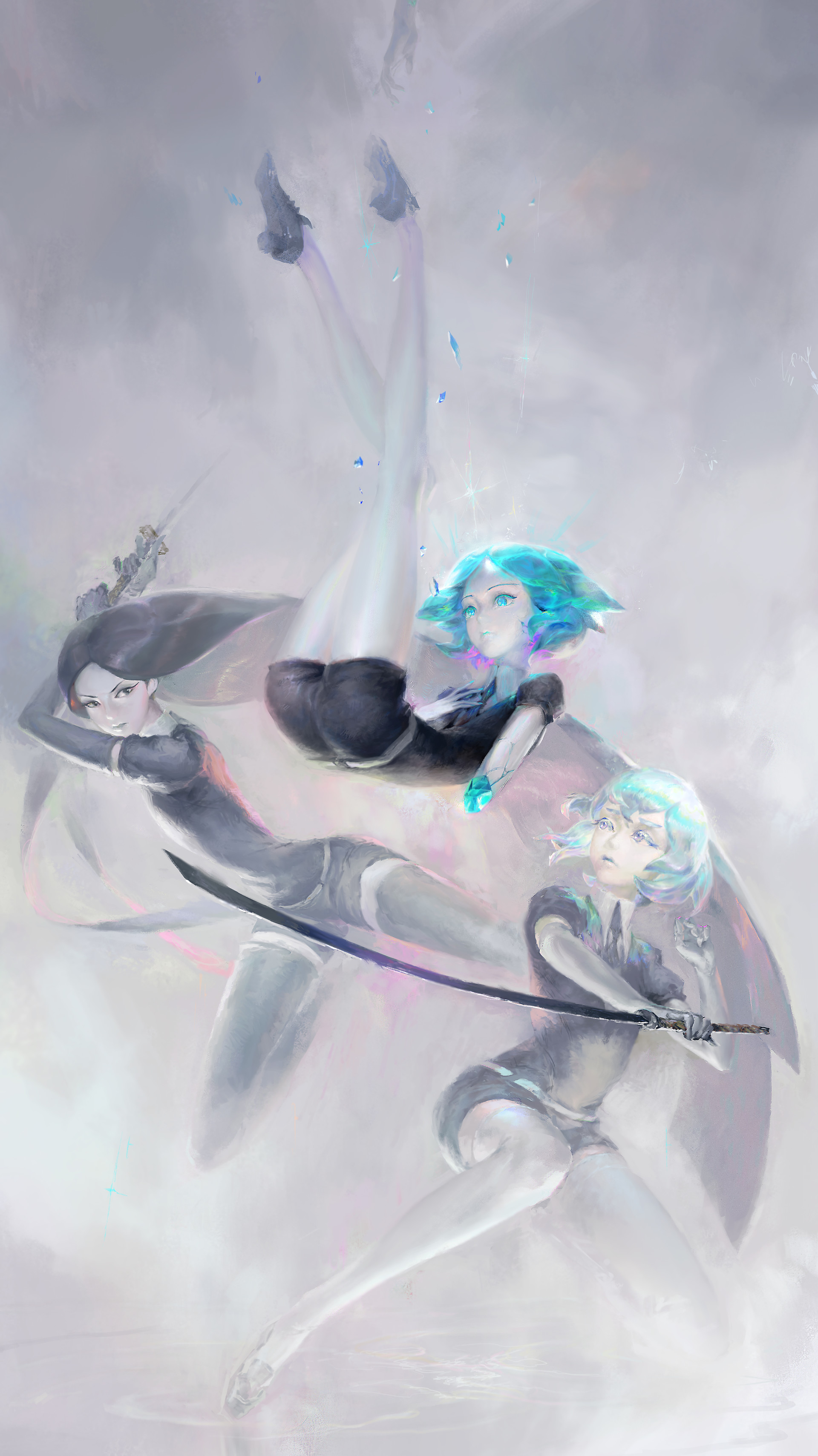 |
| Phosphophyllite by Zhengyang Hu |
Mebirinu
Often friendly people with black blood and bones that tinge their skin blue. By holding their breath they can turn their skin black, but this leaves them lightheaded.
They have come from far off forests of giant mushrooms, and tend to value stiff, geometrically cut clothes made of fungal paper. Officials will also wear pieces of giant insect carapace, but most in Tajira cannot afford such a luxury. Their predilection for strong drink and other fermented foods has led to a reputation as drunken poisoners.
Shimex
Seafarers with neither hair nor nails- anywhere on their body. Only some women wear wigs in Tajira, but most wear fine makeup. Rumors claim they season their food with sand, but it is actually crushed coral.
It is customary to get a tattoo each time a new crew is joined, so a shimex covered in ink has either survived many failed voyages, or moved around for another reason.
Finnin
Quiet, gentle folk from cursed plains, who created the elemental magics of sorcery. Each individual has a single, large eye, some of which can be found in the darkest of markets.
Sometimes thought of as strangely violent, for their integration of armor-like plates of metal in clothing, which is generally made of surprisingly fine, sturdy silks.
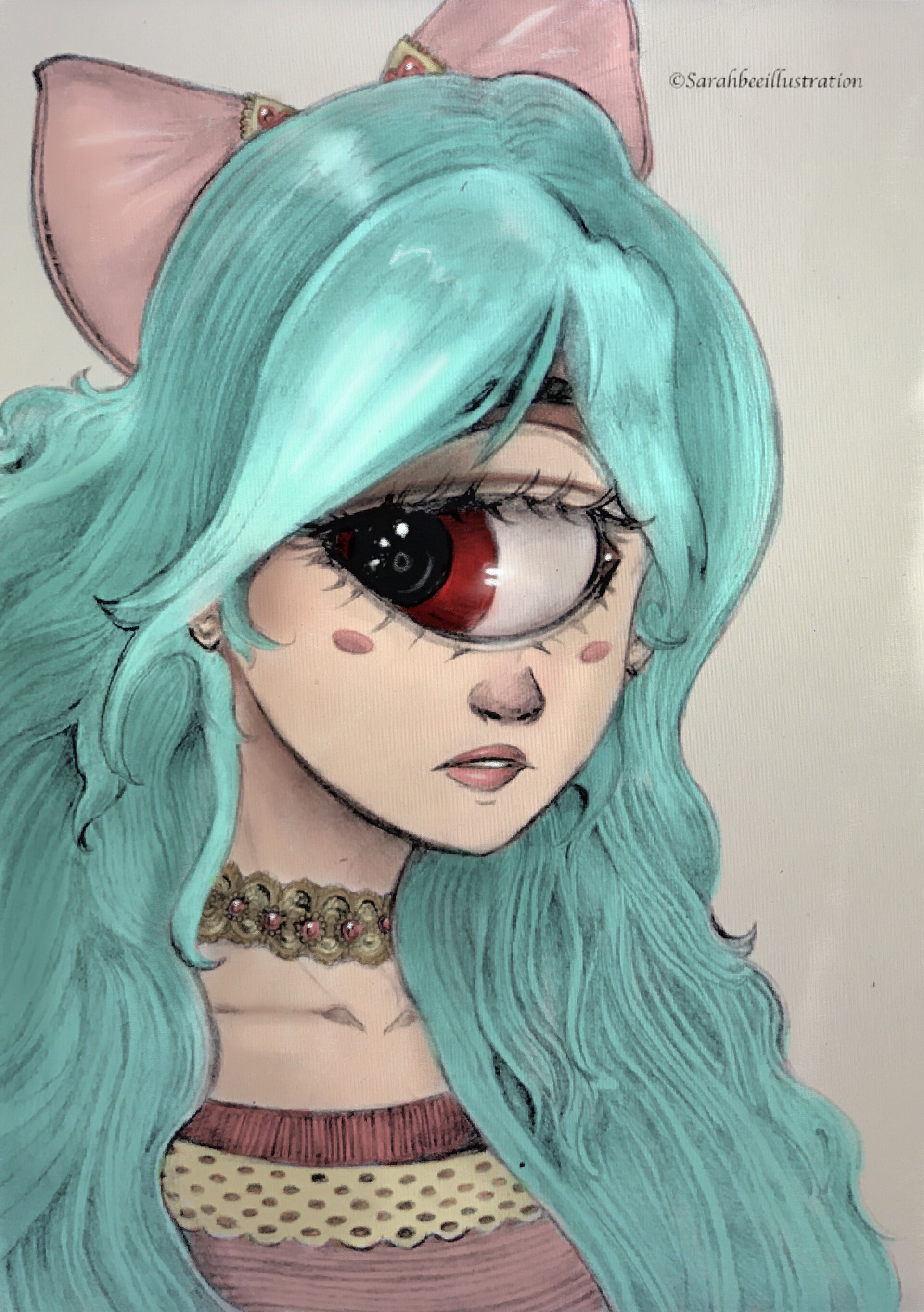 |
| Cyanne by Sarah Burks |
Nihemi
Graceful people of fine ceramic and artful silks, they have metallic skin and four, narrow eyes. Very rarely one will be born with golden skin.
The wealthy trade in quicksilver, requiring extremely specific containers and the finest of porters. Strange, tall mounts carry them aloft, keeping the long draping robes that are in fashion from dragging on the ground.
